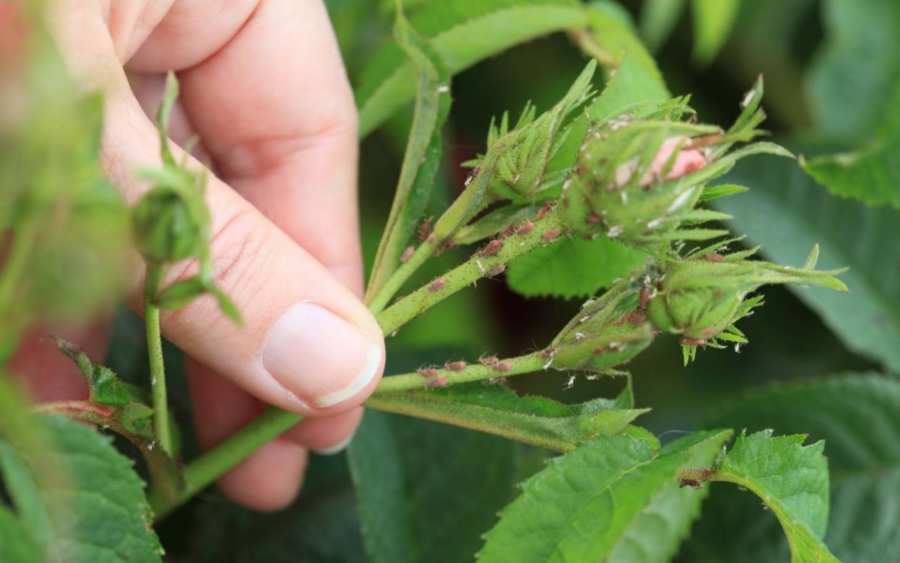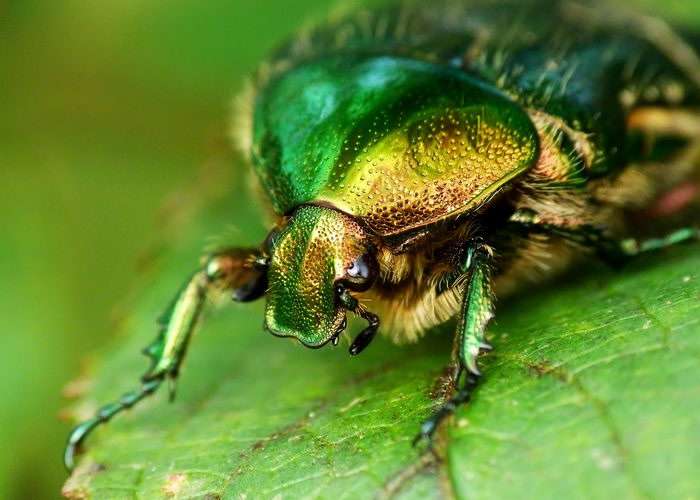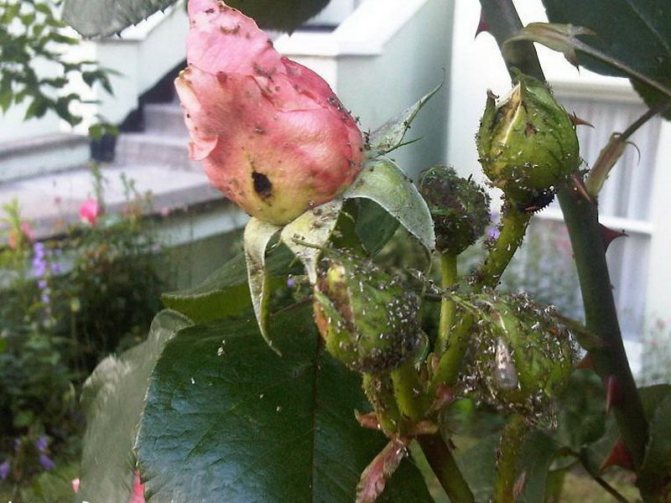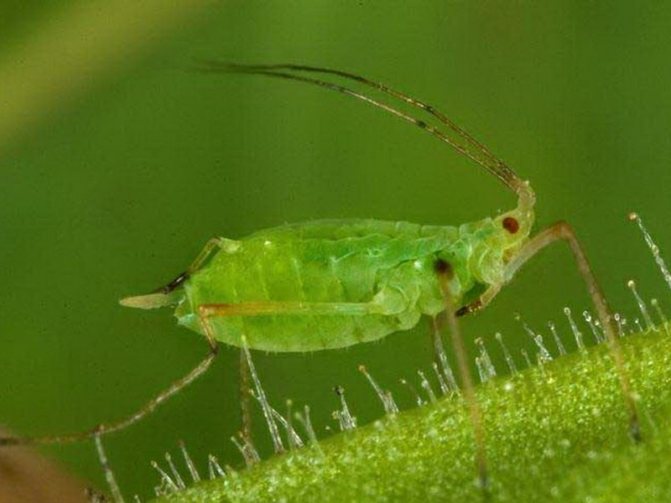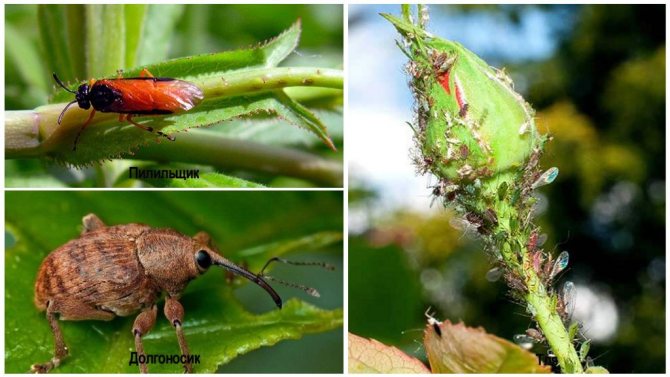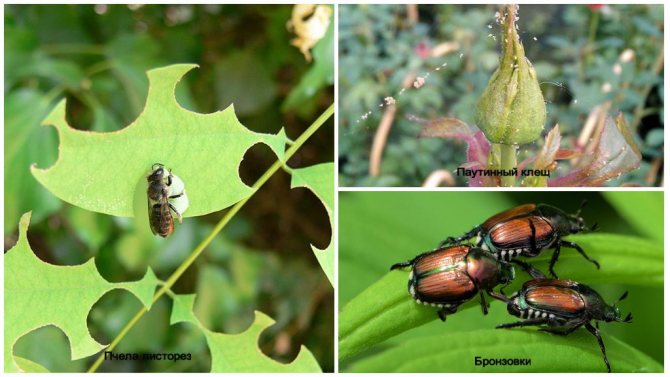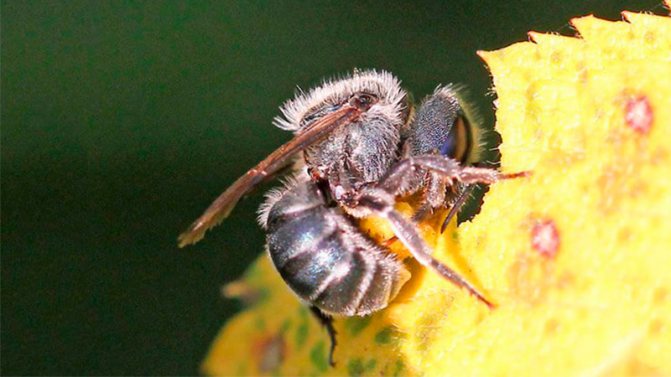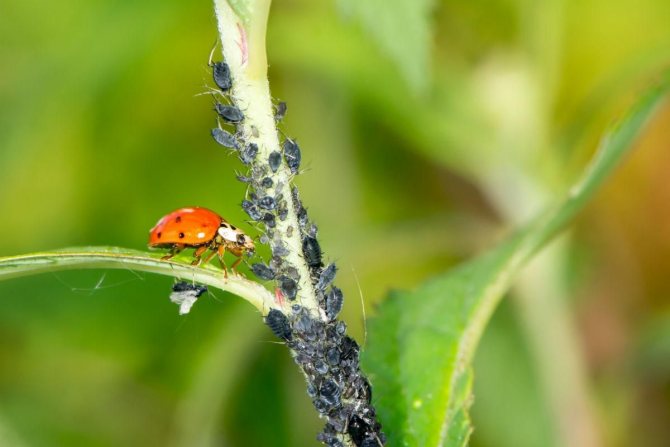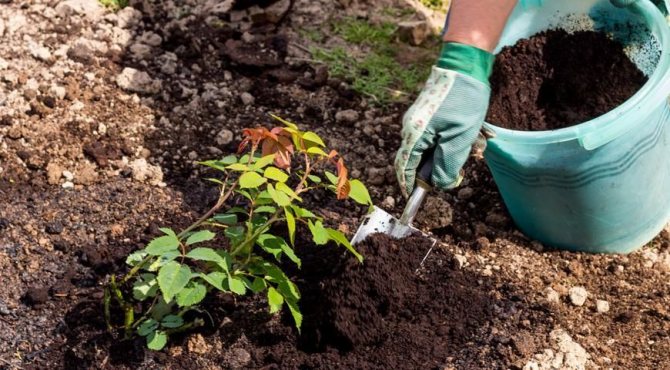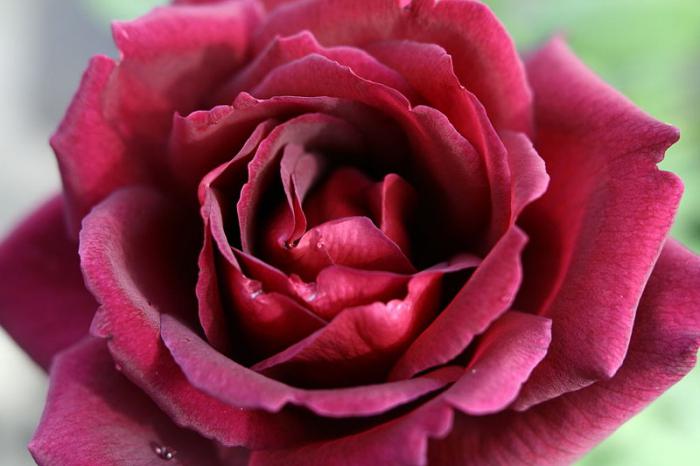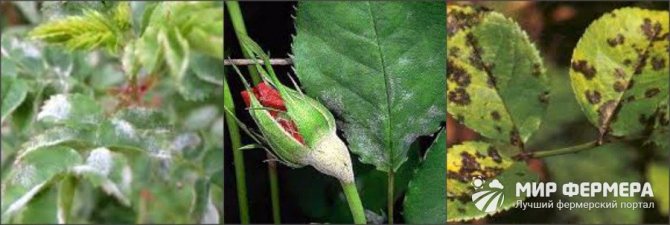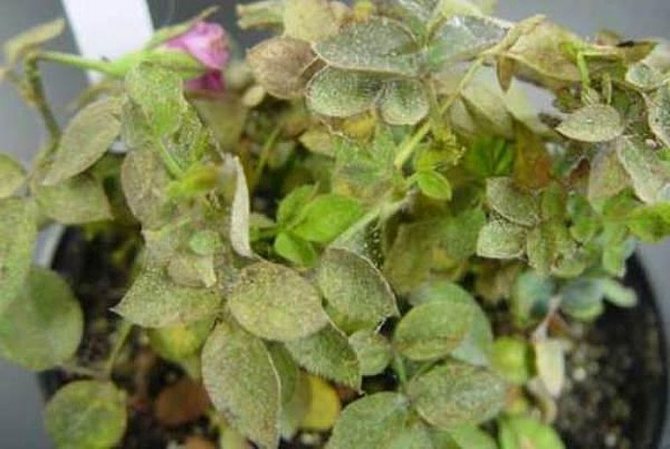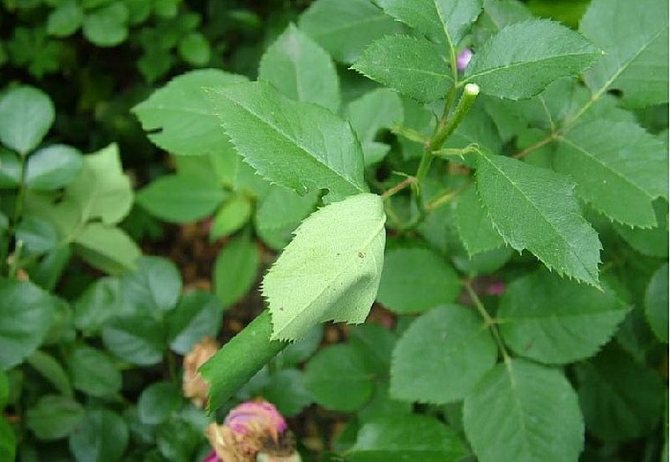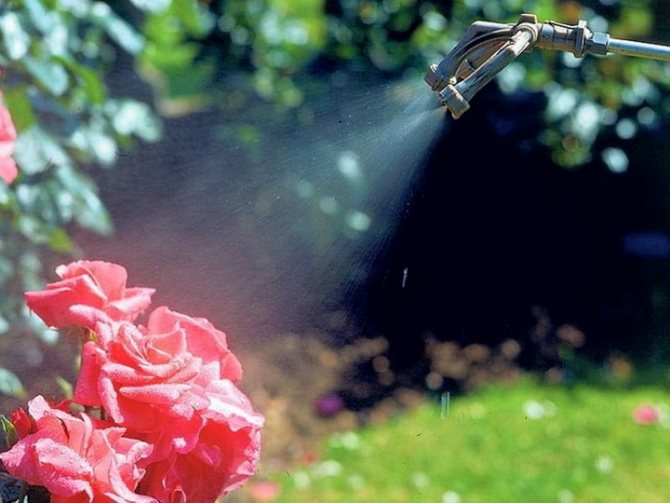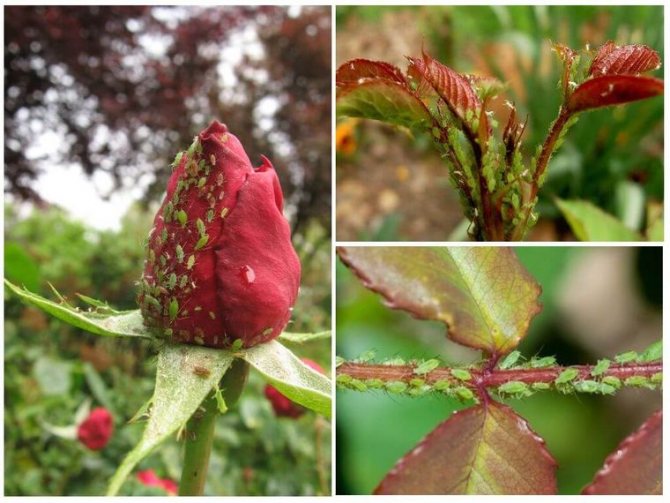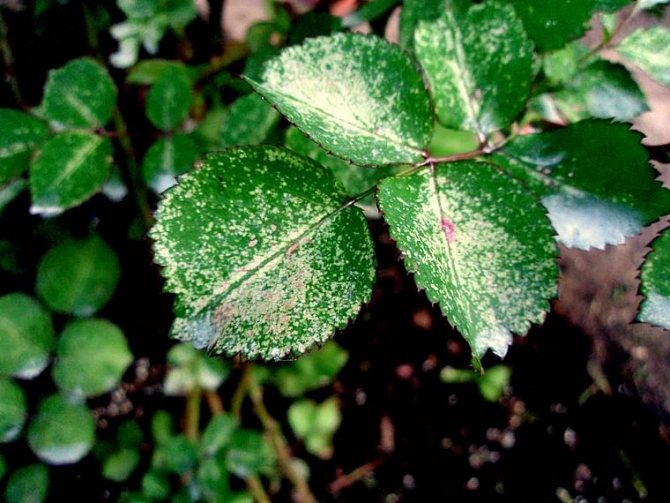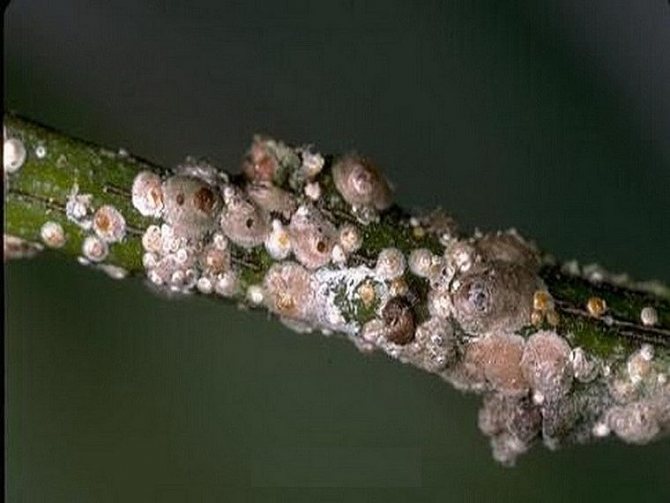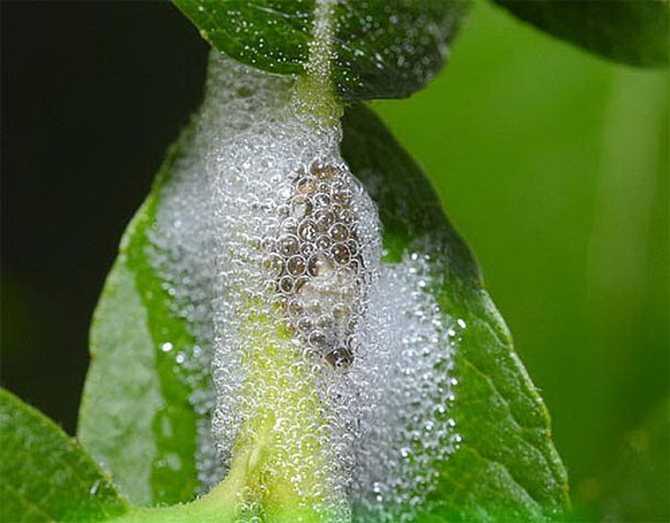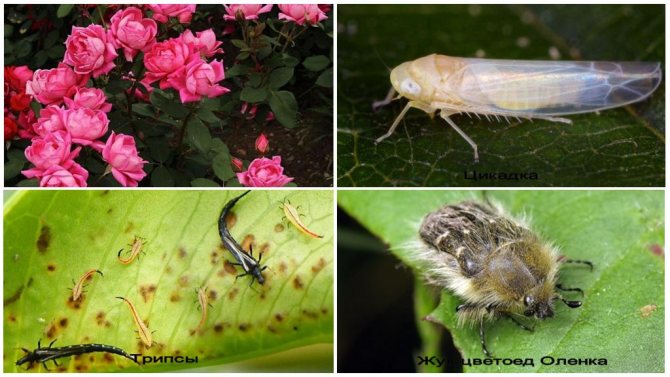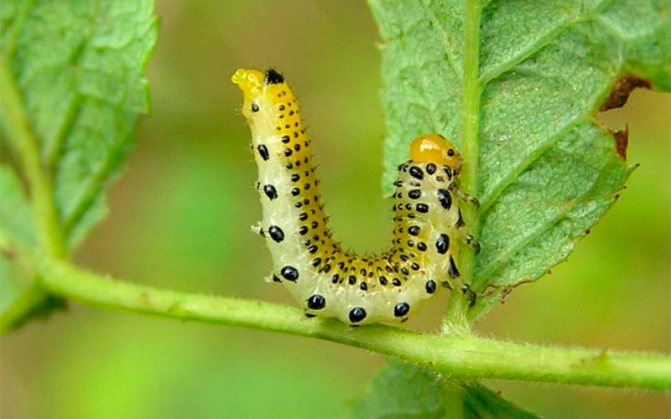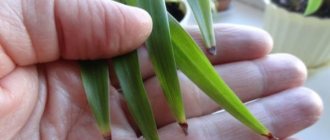What are these insects?
Green midges that infect roses are small bugs 0.5-2 mm in size. Their body is soft and ovoid. These insects may or may not have wings. They multiply very quickly and affect the entire garden. One female is capable of laying up to 150 eggs at a time. These insects can be found on buds, leaves, stems.
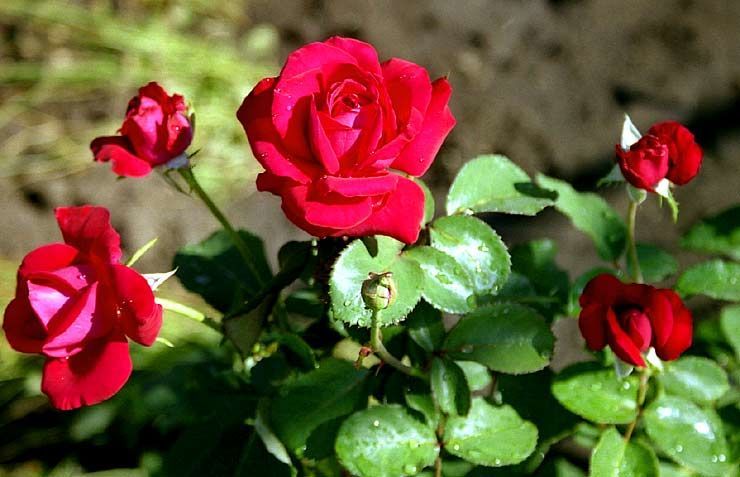
Aphids eat a rose from the leaves
After hitting the plant, the aphid sucks the juice out of it. As a result, its leaves curl, the flowers dry out, and the shoots are deformed. The plant itself slows down in growth, and the immature buds no longer ripen. The affected flower most often dies.
Aphids on roses, way to get rid of number 1
In addition, green bugs can cause the development of various diseases in a flower. One of these is the black sooty mushroom. This happens due to the fact that aphids, in the course of their vital activity, release a sweetish sticky liquid. It is an attractive environment for other microorganisms.
Prophylaxis
If you frighten off the aphids in a timely manner and prevent them from producing numerous offspring, the rose garden cannot be saved. Flower bouquets or vegetable seedlings bought at the market are carefully examined. Pests can be brought into the garden or garden on their own. You can frighten off pests with "fragrant flowers". Plant one of the following plants around the rose garden:
- lavender,
- nasturtium,
- thyme.
In addition to harsh floral aromas, green and black aphids can be defeated by planting one of the umbrella plants near the rose garden: parsley, carrots, dill, fennel. Their aroma attracts hoverflies, and hoverflies are very fond of aphids. In addition to hoverflies, ladybugs and earwigs are not indifferent to aphids. If the cows are safe for humans, the earwig can pinch, for which the people called it “the pinch”.
How can aphids be prevented?
To prevent the appearance of green midges on roses, you must adhere to the following recommendations:
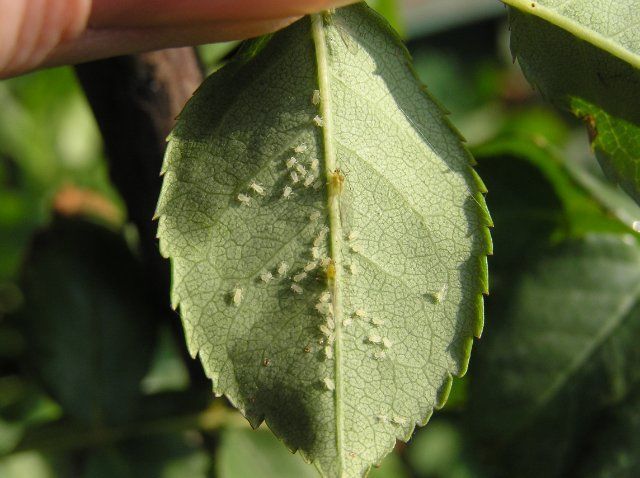

Insect pests can be found on the inside of the leaves.
- Before planting new plants in the ground, carefully inspect them for the presence of aphids. It can also be on roses, which are decorated in bouquets;
- Buy sturdy plants that have strong leaves, roots, and stems;
- plant umbrella crops near ornamental flowers. These include - carrots, parsley, fennel, dill and others;
- in the garden where roses grow, place several flower pots with wood shavings evenly over all areas. She will attract earwigs that feed on these pests;
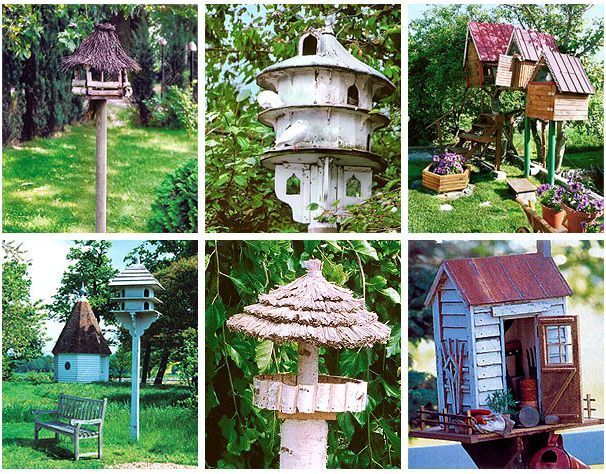

Place as many birdhouses in the garden as possible - Install several birdhouses or bird feeders in the area of the garden with roses. They will eat green beetles and other pests;
- Feed the flowers according to the growers' instructions. Aphids prefer plants that are weakened from improper care;
- create optimal conditions for roses - watering, lighting, air circulation;
- if you find several insects that have not yet managed to hit all the flowers, collect them by hand. Also treat the plants with plain water. Repeat this procedure several times at intervals of 1-2 days;
- loosen the soil regularly. It can also be mulched.
What is the danger of bronze beetles
Many beginners do not react to the appearance of green beetles on roses. They do not ask themselves how to deal with them, believing that shiny insects do not harm the plant. In fact, green bugs on roses are very dangerous, because they eat fragrant flowers and buds, damage young shoots and are the reason why roses do not bloom.


Larvae of large green beetles on roses develop in the soil. But they do not harm the root system. On the contrary, they convert plant waste into vermicompost. Many gardeners have long considered them to be beneficial insects in the garden. This happens until they appear on the surface. And here a serious problem arises - how to get rid of green beetles on roses. Bronzovki:
- spoil the decorativeness of flowers, damaging the petals;
- eat young buds, leaves, shoots of the plant;
- inhibit the development of the bush.
Only a healthy rose garden pleases the eye. Weak bushes are subject to the maximum influence of negative external factors, they are not able to bloom profusely. Very often, an invasion of insects leads to the occurrence of infection and to the death of the plant. That is why it is important to know how to protect roses from bronze beetles.


Advice! If any insects appear on the bush, cobwebs, uncharacteristic secretions, preventive and therapeutic measures should be taken immediately.
Traditional methods of pest control on flowers
If you find green bugs on the buds and stems of roses, you need to use one of the means that will quickly eliminate this problem:
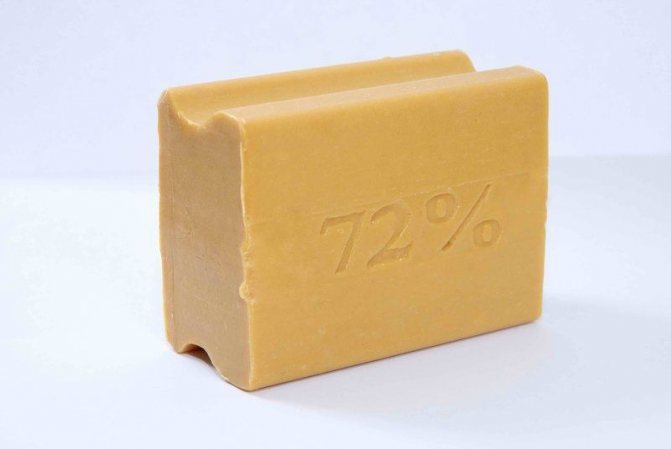

Laundry soap for aphid solution
- master's soap. Take gray household soap and dissolve it in a little water to get a solution of high concentration. With its help, you need to process the plant. Then rinse off the soapy water with plain water. The master's soap is not dangerous for the rose, but destructive for the aphids;
- decoction of green leaves of tomatoes. To prepare it, pour boiling water over fresh tops and cook for 15 minutes. After that, the liquid must be filtered and cooled. The resulting solution is sprayed and watered on the plant. This must be done several times at intervals of 1-2 days;
Sprinkle ashes on the soil - tobacco and ash. Mix them in equal proportions or use one of the products. Sprinkle it over the soil near the flowers, then pour water over the beds. Repeat this procedure after a few days;
- kerosene emulsion. Take 100 g of gray laundry soap and dissolve it in 120 ml of water. Put this mixture on fire and boil. Then add 190 ml of kerosene and 10 liters of clean water. With this solution, it is necessary to process the plants several times every 7 days. After that, clean the rose leaves with plain water;
- stinging nettle. Prepare a concentrated decoction to spray the flowers;
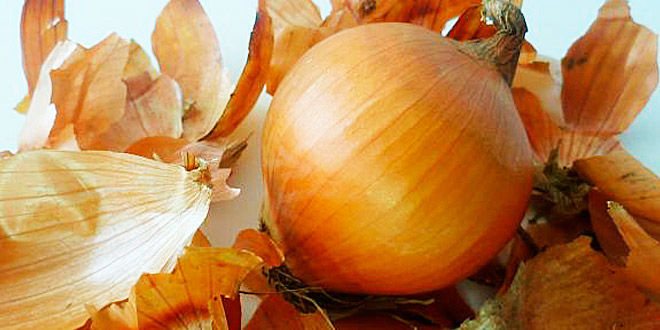

Onion peel repels pests from plants - potato tops. Use 0.5 kg of fresh potato tops, which you need to pour 5 liters of boiling water. This mixture must be infused for 2 days, after which strain it, and add 50 g of gray laundry soap. Spray flowers with this product 3-4 times every 5-7 days;
- garlic. Use 100 g of raw garlic, which must be poured over 3 liters of cold water and infused for 3 hours. After that, you need to add another 3 liters of clean water and spray the plants with this solution. To achieve a positive effect, you need to repeat the procedure every week for 2 months;
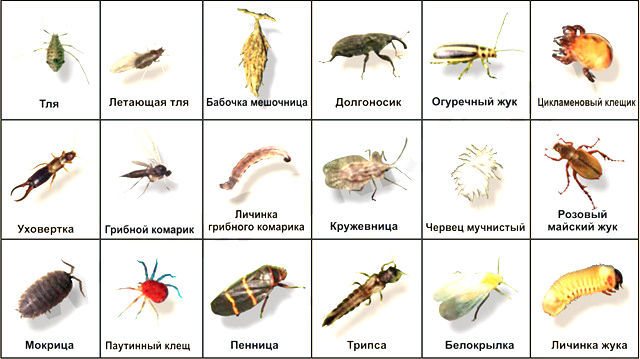

Types of insect pests - onion. You need to use 50 g of raw onions and 5 g of gray laundry soap. They are filled with 1.6 liters of hot water. When the liquid cools down, treat diseased plants with this mixture;
- hot peppers. 100 g of fresh hot pepper should be poured into 1 liter of water.After that, you need to boil this mixture in a sealed container for 1 hour and leave for 2 days. Then strain the infusion and add 10 liters of water and 1 tbsp. l. soap powder. Apply the solution to the plants 3 times at intervals of 6 days;
- onion peel. Dry raw materials must be poured with hot water, infused for 24 hours. It is necessary to spray the flowers with the prepared solution for several days until the aphid disappears completely.
Tobacco decoction for home plants
Spraying with soap or tobacco broth will also help. The most common tobacco for solution preparation is makhorka. Fill the tobacco with water at a ratio of 1:10 and soak for 48 hours. Then the infusion must be boiled for 2 hours. The resulting broth is a concentrate. Before spraying the leafy part of a room rose, it must be diluted with water in equal proportions.
You can spray a rose only 3 times with a break of 10 days. The tobacco broth should not penetrate the root system. This will cause the flower to wilt. The soil in the pot at the time of spraying should be covered with a sheet of paper or cling film.
Chemicals in the fight against aphids
Aphids on roses - way to get rid of number 2
If folk remedies or preventive measures have not worked, chemical preparations must be used. They will quickly get rid of pests and preserve your flowers. The most effective remedies are:
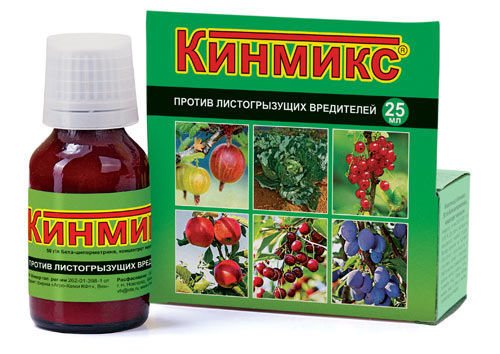

Means "Kinmix" against pests
- Kinmix. The rate of the preparation is 0.2-0.5 l / ha. One ampoule must be diluted in 8-10 liters of water, after which the flowers are processed. This tool can be used 1-2 times, depending on the degree of insect infestation;
- Decis. It is necessary to dissolve 1 ml of this product in 5 liters of water. This drug can be used no more than 2 times;
- Spark. To prepare a solution, you need to dissolve 2 tablets in 20 liters of water. The consumption of this tool is 1 liter per 5 sq. m;
- Inta-vir. 1 tablet must be dissolved in 10 liters of water. Plants must be processed in the morning or evening. You can spray flowers no more than 3 times;
- Fitoverm. 2 ml of the drug must be diluted in 0.5 l of water. It is necessary to spray no more than 3 times in 8 days;
- Aktara. Available in the form of granules or solution. To prepare a liquid that is intended for processing plants, it is necessary to dilute 600 ml of Aktar in 5 liters of water.
Calendar of rose treatments from pests and diseases
A set of means for caring for roses should consist of drugs that allow you to destroy both pests and pathogens.
- Means for powdery mildew and spotting: Falcon, Tilt Super-Alto.
- Means against downy mildew: Revus, Profit-gold, Thanos, Ridomil-gold, Previkur.
- Insecticides: Aktara, Inta-Vir, Iskra.
- Means for fighting ticks: Vertimek, Fitoverm, Apollo, Sunmight.
- Means that improve the adhesion of drugs - liquid, green or laundry soap.
All of these funds can be mixed with each other, increasing their effectiveness.
An approximate list of required treatments
- With the appearance of the first leaves on the bushes, a mixture consisting of preparations of groups 1, 2 and 3 is used. We carry out at least two treatments at intervals of 10-14 days. When a large number of insects appear, we additionally use agents from group 3.
- The bud extension time is a mixture of media 1,2 and 3.
- Mid - end of July. A mixture of products from groups 1 and 2. Preparations from group 3 are added as needed. Means need to be changed every time so that there is no addiction.
Preparations from group 4 (for ticks) are added to the mixture if necessary.
Each time, carrying out processing, it is necessary to take into account the weather conditions.
General arrangement of pests
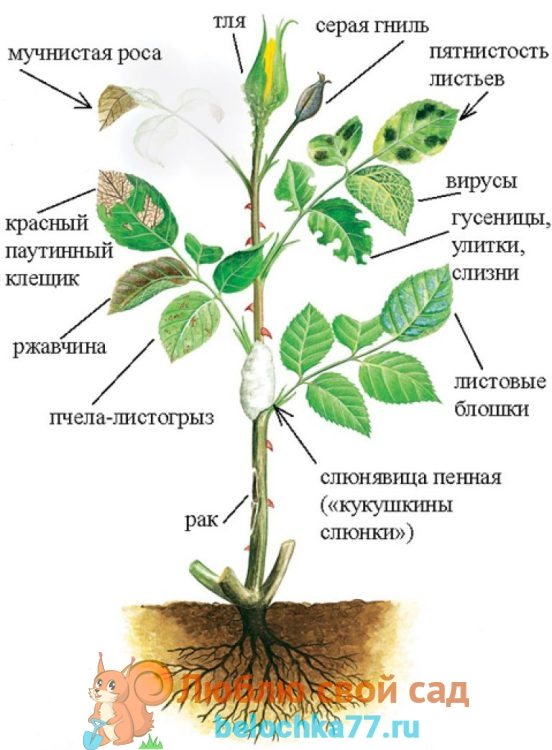

Diseases of the rose with a photo, description, treatment
Which method of struggle should you prefer?
Aphid chemicals are very effective, but they have a negative effect on all plants that are in the same area as roses.Therefore, use these remedies as a last resort if other methods have failed.


You can spray roses from aphids if they do not grow in an orchard
Also, the use of drugs that contain chemical compounds in their composition lead to the following result:
Means for spraying roses from pests
- rose petals cannot be used for cosmetic and culinary purposes;
- if vegetables and fruits grow in one area, they cannot be eaten for some time;
- after a while, the pests will become immune to aggressive chemical compounds.
Therefore, it is best to combine several methods that will be most effective if used at regular intervals.


Is it possible to spray roses
Rose leaves in holes: how to process a flower
Since ancient times, it has been known how to spray roses: a tablespoon of baking soda was diluted in a glass of water and shrubs were sprayed five times a season. Also, according to the folk method, infusions of ash or mullein were made in a ratio of 1:20, which were used every week both for prophylactic purposes against fungal pathogens of flower diseases, and in the form of outside root feeding. At the moment, there are many chemicals than to spray roses to prevent various diseases and insect pests, but they must be alternated, as pathogens can become resistant to medicinal chemicals over time.
Risk factors
Ornamental rose varieties obtained as a result of selection are themselves rather weak and are often attacked by pests and pathogenic flora. But sometimes the gardeners themselves contribute to a decrease in the resistance of the plant by planting it in the wrong place and taking the wrong care of it.
The rose can weaken with:
- lack or overabundance of food in the soil;
- lack of light;
- lack of ventilation;
- humid and warm environment;
- strong thickening of the bushes.
Having noticed the first signs of damage to the rose by pests, it is urgent to take adequate measures to combat them. Timely and complete elimination of insects will allow the plant to recover faster and prepare for wintering.
Removing the winter cover
The opening of roses in spring cannot be done immediately, it is better to perform this procedure gradually, gradually accustoming them to full lighting. It is highly undesirable when incompletely thawed soil is exposed to direct sunlight. This leads to the fact that water from such soil does not flow to the plant, but at the same time evaporation occurs. The result can be drying of the roses. That is why, first of all, you need to remove the film with insulating materials, and cover the shoots with a cloth that will create a shadow. This fabric should only be removed when the soil has completely thawed.
Also, do not open roses too early in spring, because aggressive winds and low temperatures can damage the plants. But it's not worth delaying either. Damping out bushes is no better.
It is better to shoot the shelter in the evening and in cloudy weather.
Infectious rose burn: treatment
Infection burn also belongs to fungal diseases, but appears in the fall and spring when the plant is dormant.
The lesion is facilitated by wounds left on the leaves and stems from frost or careless pruning. It is through these mechanical damage that the fungus penetrates inside and spreads quickly, moreover, it can infect not only rose bushes, but also blackberries and raspberries.
An infectious burn is a great danger, since it takes a long and difficult time to heal, and if the use of chemicals did not bring the desired result, it is better to completely remove the bush.
Signs of an infectious burn
There are several telltale signs that can help you recognize an infectious burn.At the initial stage, dark brown ulcers appear on the stem, which gradually spread throughout the plant and can cause its death (Figure 6).
Spring processing errors
Here are some mistakes some gardeners make:
- Spraying immediately after removing shelters or on bare shoots, as well as before sanitary pruning of bushes.
- In one day, treat with two different preparations for diseases and pests of roses. If the drug is not complex, then spraying is carried out with an interval of 2-3 days.
- Carry out the procedure during the day, when the sun is very hot and can leave a burn at the site of contact with the drug.
- Spray in windy weather, in which case the drug may not get on all shoots and leaves.
Bee leaf cutter
It parasitizes in late June and early June. Damages leaves. A clear sign of the sabotage of the leaf cutter is the presence of holes of the correct shape on the plate. The flowers remain intact. The insect uses pieces as a building material.
A bee builds a nest in the immediate vicinity. For construction, about 1,000 circles of different diameters are required. The bee neatly folds them, and later glues them together with a special substance. To cut the desired shape, the insect sits on a rose leaf, clings to its jaws, and whirls around itself. Picks up material, flies away.
On a note!
The insect does not cause much harm to roses, but it significantly spoils the presentation. The likelihood of developing fungal diseases increases somewhat.
Experienced florist tips
To prevent all of the above ailments of the southern beauty, experienced flower growers and summer residents recommend, first of all, to maintain perfect cleanliness on the land plots planted with flowers, to remove and burn fallen affected foliage in a timely manner, cut off infected areas of stems and inflorescences, to increase the immunity of plants by spraying and watering with the necessary fertilizers.
When planting flowers, keep a sufficient distance for airing. Provide protection against rodents and pests.
Observing all the rules for caring for plants, a blooming garden will delight as long as possible.
Weevil
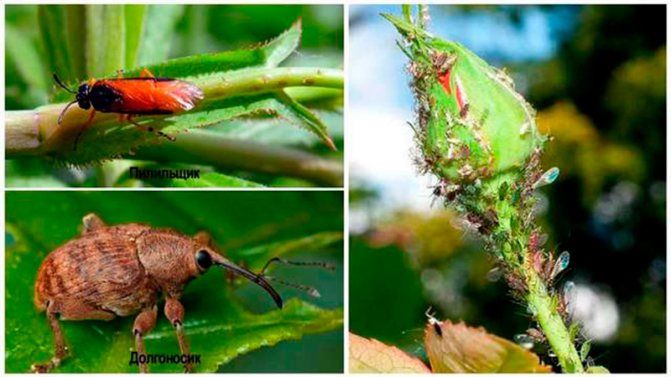

The body length of the weevil beetle reaches one centimeter. The color of the back of the beetle is dark gray. It is problematic to see this pest, it hides in the soil all daylight hours. Creeps out with the onset of darkness. Weevils feed on leaves, nibbling them along the contour. A large colony of insects can destroy the entire bush.
The sad thing is that the larvae of the weevil beetle also live in the ground, eating the roots of rose bushes there.
To remove the weevils, the bushes are sprayed with an aqueous solution of insecticides. This garden work should only be done late in the evening.
Pests of leaves of roses thrips (with photo)
Small (up to 1 mm) sucking pest. The larvae, nymphs and adults of this pest feed on the buds, flowers, leaves and young shoots of roses. They are light yellow in color.
As you can see in the photo, thrips weaken roses by sucking juices from leaves, buds and flowers:
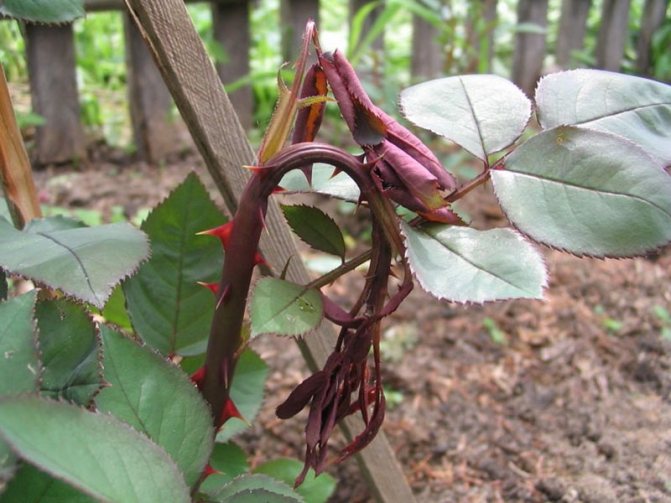

On the buds, flowers, leaves and young shoots of roses, larvae, nymphs and adults of this pest feed
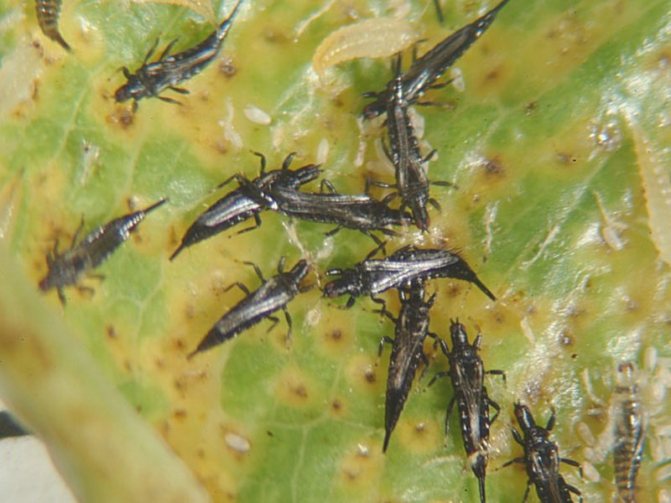

Thrips in the photo
Buds damaged by pests, flowers, especially of light color tones, are covered with characteristic small red specks. The flower becomes disheveled and fades quickly. At the base of the petals, pests are clearly visible to the naked eye. Small yellow spots appear on the leaves. They take on a silvery hue, as if damaged by a spider mite.
These pests of rose leaves hibernate in the upper soil layer and under plant debris. Roses growing in warm, dry places are most at risk, for example, near the walls of a house, on terraces on the south side or near paths and areas lined with tiles or covered with asphalt.In spring, thrips feed on weeds, then fly to rose bushes.
In the fight against thrips, in the case of severe lesions, the same preparations are used to spray roses as in the fight against aphids.
Unrolling of plants
In March, the first main processing of plants is carried out, namely, their unloading. In this case, you must follow the basic rules:
- It is advisable to remove unnecessary soil completely or evenly distribute it throughout the rose garden.
- It is better to carry out the hilling process in the evening, when direct sunlight does not fall on the site. It can also be done in cloudy weather with low temperatures.
- For hilling, you do not need to rake the existing soil near the bush, it is better to fill in a new one. This will make the process of unbrocking less painful for the plant.
Copper sulfate is a universal remedy
Particular attention should be paid to how roses should be treated in spring with copper sulfate. This measure is optimal, because, according to experts, this tool does much less harm than others, if the treatment is carried out in accordance with all the rules. Before processing roses in the spring, you need to prepare a solution of copper sulfate. Containers must be taken exclusively glass or plastic. The solution must be of a certain concentration. This is usually 1% or 3%. It is the latter value that is necessary for the spring processing of roses. When working with this tool, you need to carefully monitor the observance of precautions.
Causes of diseases
Cultivation errors are the main causes of disease. High humidity is a suitable environment for spores and microorganisms. Pathogens germinate at +3 ° C, and activation occurs at + 18-23 ° C. If the bushes are planted very close, then natural aeration deteriorates. Due to the stagnant air in thickened roses, fungi will rapidly develop.
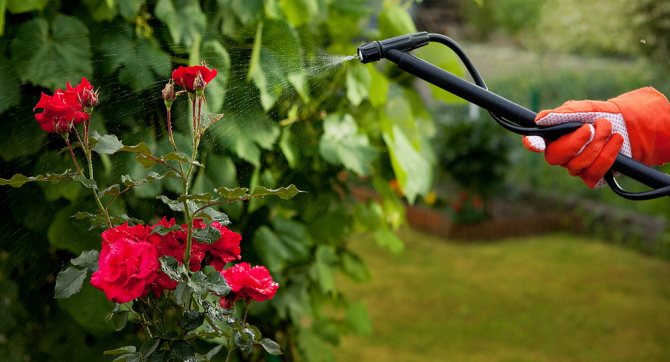

Flowering plants need to be grown in fertile soil and fertilized often. Lack of macro- and micronutrients weakens crops and makes them vulnerable to disease. Immunity decreases after attacks of parasites and mechanical damage to stems and roots.
Uncleared litter is a favorable environment for the development of diseases.
Cicadca
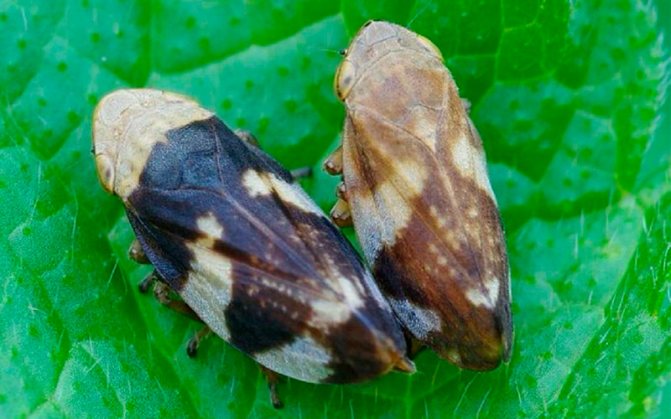

Rose leafhopper is also a sucking harmful insect. The harm from her is colossal, but she does not reach the harm from aphids. Cicadci also breed quickly. During the season, three generations can change on the site. Under the influence of leafhoppers, tiny white dots initially appear on the leaves of roses.
If you ignore this sign, then the destructive process will develop rapidly. The leaves will soon begin to turn yellow, fall off. Further delay with the use of chemicals is fraught with complete loss of foliage. It is clear that the bush dies without leaves.
Watering bushes
Roses are very demanding on the quality of the soil. It is necessary to ensure that its moisture content is sufficient. If your area is loose soil, drip irrigation is an effective method.
If it is impossible to organize drip irrigation, watering must be done manually. This should be done quite rarely, but at the same time it is quite abundant. For watering, you need about 20 liters per 1 m2.
Watering should be done in a special way. For water, you need to make depressions in the ground around the bush itself. It is in them that watering needs to be carried out. At the same time, it is better not to touch the leaves, especially on those days when the air temperature is too high. If we neglect this, a consequence of negligence can be a thermal burn, and in the future, the death of still very young shoots.
Leaf rollers


In the climatic conditions of Central Russia, fruit and rose leafworms are found. From the names it is clear which pest affects the rose bushes.
Caterpillars appear on roses at the very beginning of spring, when the buds on the branches begin to swell. They are initially affected by leafworms. Then they switch to young leaves.From the name of the pest, it is clear what effect it has. The leaves affected by the caterpillar roll up into tubes, turn yellow, and fall off.
The invasion of leaf rollers is never massive. They live in rose bushes gradually, so they can be easily removed by hand and destroyed, especially since the insect is large, it is clearly visible.
To prevent the appearance of leaf rollers, it will not hurt to spray the bushes with any pesticide in the spring before the buds swell.
To expel the caterpillars without destroying them, folk remedies allow. Such measures, by the way, are environmentally friendly, do not have any negative impact on plants, and are safe for humans.
Mustard powder perfectly copes with scaring away leaf rollers, aphids, and some other harmful insects. They need to powder the bushes a little. Some gardeners combine mustard with aqueous solutions of Aktara or Intavir. With this tool, they water the soil around the rose bushes.
Removing the protective cover from roses in spring


Removing the winter shelter from the roses in time is just as important as building it on time. If you do this early, then the bush will freeze, and if it is too late, it will rebuke. The optimal time for this is the time when the snow melted, and the average daily temperature was set at + 5 ... + 6 ° C (for example, +10 ° C during the day, and about -4 ° C at night).
After removing the shelter, the roses are subject to careful examination and preventive treatment. But this does not mean that you no longer need to cover them. Bare pink shoots dry out quickly and die out of habit from the bright sun: the roots are still sleeping and do not absorb moisture from the soil, and the moisture from the branches actively evaporates from the sun's heat. Therefore, after spraying, cover the bushes again using a breathable material that blocks some of the sun's rays.
Rules for caring for roses in spring


In order for roses to remain healthy and unharmed, they need to be given special care in the spring. It includes several important points:
- Pruning... In the spring, preventive pruning is necessary to remove shoots that could not survive the winter and turned into a source of infection. At this time, pruning is also carried out to form a bush and stimulate flowering.
- Disease treatment... Good conditions were created under the shelter for the reproduction of pathogenic microflora. If the shrub is not treated, then fungi and viruses will continue to multiply, dooming the plant to death.
- Pest control... In the spring, after hibernation, not only plants but also insects wake up. They not only feed on their juice, but also lay eggs, from which very voracious caterpillars and larvae appear. Spraying the roses with poisons in spring will help protect the branches and leaves from being eaten by pests.
- Top dressing... After the roses wake up completely, they need a large amount of nutrients to quickly build up green mass. Therefore, they need to apply mineral and organic fertilizers.
In spring, loosening and mulching of the soil, as well as its irrigation, if there is a spring drought outside, can also be useful procedures.
Spider mite
It is active in dry, hot summers, when the temperature is stable within the range of +29 - +31 ° C. The number of pests increases instantly, as the colony is replenished with new individuals every 14 days. Spider mites suck out leaf juices. Spots and bumps appear on the damaged plates. Leaves curl, darken, fall off.
With a significant infection of the flower garden, small beetles eat whole roses - leaves, stems, buds that form, flowers. A characteristic sign of the presence of a pest is the presence of a cobweb. The bugs themselves are miniature in size - up to 2 mm, white, yellow, green, red. If cobwebs and white bugs are seen on the rose, you need to act immediately.
Rosé sawflies
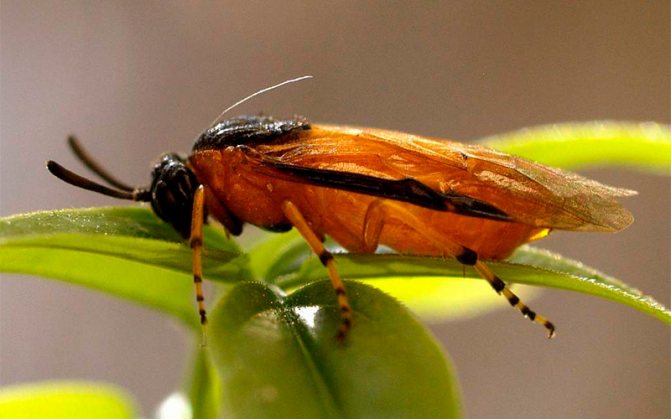

The sawfly larvae are called false caterpillars. The sawfly has a shiny black back, gray wings. The legs are black and the tibiae are bright yellow.
Sawfly females lay only one egg each. They always do this at the tops of young shoots. The emerging larva bites into the soft tissue of the shoots and begins to move downward. Having passed about 4 cm, they become adult insects, and, accordingly, more voracious. Branches affected by sawflies dry up quickly. In late autumn, these insect pests hide in the soil, where they remain until spring.
If by winter you dig up the soil around the rose bushes, then the false caterpillars will be on the surface, and with the onset of cold weather they will die. Spring digging will not hurt.
Destroy pests with an aqueous solution of pesticides. All dry branches on rose bushes should be cut and burned in a timely manner.


